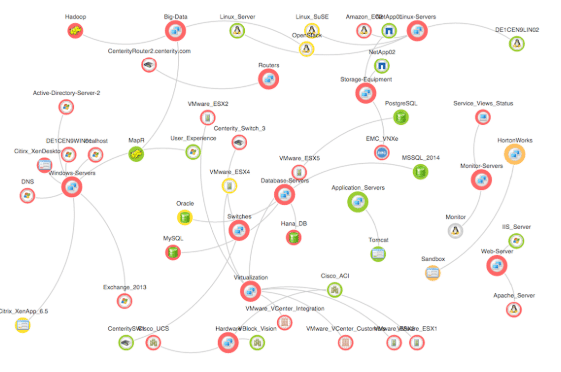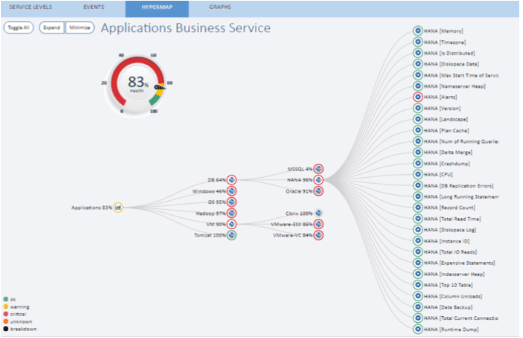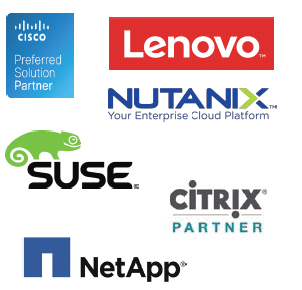The modern Managed Service Provider (MSP) has shifted from a reactive and unpredictable break-fix service model to a proactive, fixed-rate subscription model based on steady recurring revenue. Though this model is a net positive for both customer and provider, it ultimately holds the service provider to a higher standard by shrinking the acceptable margin or error. In this competitive landscape, MSPs cannot afford to miss out on new revenue opportunities or sink cash into inefficient processes.
If you can avoid these five ways most MSPs continue to burn through revenue, you’ll be well on your way to capturing the full potential of this rapidly growing market!
Missed Opportunities for New Business
As an MSP, taking on a new customer can put you between a rock and a hard place. If you don’t support the technologies they need managed, what are your options? Turn them away and miss out on not only a new customer, but also the opportunity to upsell for extra services? They’ll go to your competitor. Try to convince them to standardize on the equipment you support? Even if it works, it will require a huge investment in time and resources before you ever start realizing recurring revenue. And ultimately, you’ll just have to fight the same battle with the next prospect who comes to you with technology that’s out of scope.
Now imagine you have the ability to monitor, analyze and support proactively any technology in your prospect’s environment, regardless of location or complexity, all from a single pane of glass? You get a new customer without spending months standardizing either of your technologies and you’re able to monetize your new capabilities as extra services!
See how Centerity Enterprise Edition can deliver real-time performance analytics on everything from servers and switches to Big Data and IoT!
Maintaining Siloed/Redundant Vendor Tools
There’s no shortage of tools available to monitor IT environments. There are tools for just physical infrastructure, just cloud infrastructure, infrastructure and network, just network, just applications, databases – the list goes on and on. There are even tools designed simply to manage all your other tools which still forces you to maintain all of them! Worst of all, most service providers keep tools with redundant capabilities just because they prefer certain features for certain tasks. Add it all up, and the average MSP spends a fortune on unnecessary vendor licenses!
Centerity isn’t a tool—it’s a platform. A single purpose-built platform that can replace virtually every other siloed, domain-centric tool in your arsenal at a fraction of the cost. That means just one annual license leading to 60%-80% reduction in total cost of ownership (TCO). Simple, right?
See why Cisco Cloud & Managed Services replaced every tool they were using to monitor their customers’ Big Data environments with Centerity’s single unified platform [case study]!
Out of Control OpEx
Most tools don’t run themselves (yet). That usually means that for every monitoring tool there is a dedicated admin responsible for managing and maintaining that tool. If most large MSPs use even just five tools, that’s a lot of money going to admin salaries.
Now, Centerity isn’t out to steal your jobs. We want your admins to spend their time doing more than just chasing alerts. We want to give them the freedom to work on new projects that grow your business!
Learn how Centerity helped transform KPN’s managed services team from reactive and domain-focused into a proactive, business-centric organization [case study]!
Slow MTTR & Negative Net Promoter Score
The dreaded Mean-Time-to-Restore (MTTR): every IT admin’s worst nightmare! Often the biggest hurdle IT professionals face in trying to resolve incidents isn’t a lack of data—it’s a matter of not having accurate, real-time data all in one place. Using multiple domain-centric analytics tools leads to data silos, making it difficult to correlate data quickly and accurately, for instance between your ERP system or CRM and the underlying infrastructure it’s sitting on. The more time you spend manually correlating this siloed data, the longer it will take you to restore service to your customer’s CRM and the more productivity and revenue you both lose!
Because Centerity collects and analyzes performance data all via a single unified platform, there are no separate modules to integrate and cross-domain correlation occurs automatically. This means faster and more intuitive root-cause analysis and shorter MTTR.
Find out how Centerity slashed MTTR by 80% for the Israeli Air Force [case study]!
SLAs & Penalties
This is probably the most damaging of all. Not only is it a drain on revenue—it’s awful PR! An MSP simply cannot operate without a clear, real-time understanding of their customer Service Level Agreements (SLAs). But if you have an incomplete or inaccurate picture of the performance of the technologies that drive your services, your measure of the SLA for those services will also be inaccurate. And inaccurate SLAs lead to lapsed SLAs, which lead to paying SLA penalties to your customers!
Centerity flips IT performance analytics on its head by using the business process as our starting point and moving from there into the health of the individual technologies. This is only possible because Centerity can extend its metric-capturing and analytics to every technology in your customer’s environment, whether physical, virtual, SaaS, application, or advanced Big Data technologies like SAP HANA, Hadoop or even IoT/IIoT—whatever it takes to keep your customers’ businesses running. By correlating all this cross-domain data into logical real-time business process views, you maintain a clear, up-to-the-second picture of your SLAs and your customers’ critical business services!
Check out Centerity’s complete Service Assurance capabilities: customized dashboards, real-time and historical SLA reports, and more!
Running a competitive managed services firm in today’s ever-shifting technology landscape is not easy. But with the North American managed services market projected to grow to 242.45B USD by 2021, it’s more than worth it to stay competitive![1] If you can avoid these mistakes, you’ll be well positioned to capture much of that revenue potential!


























